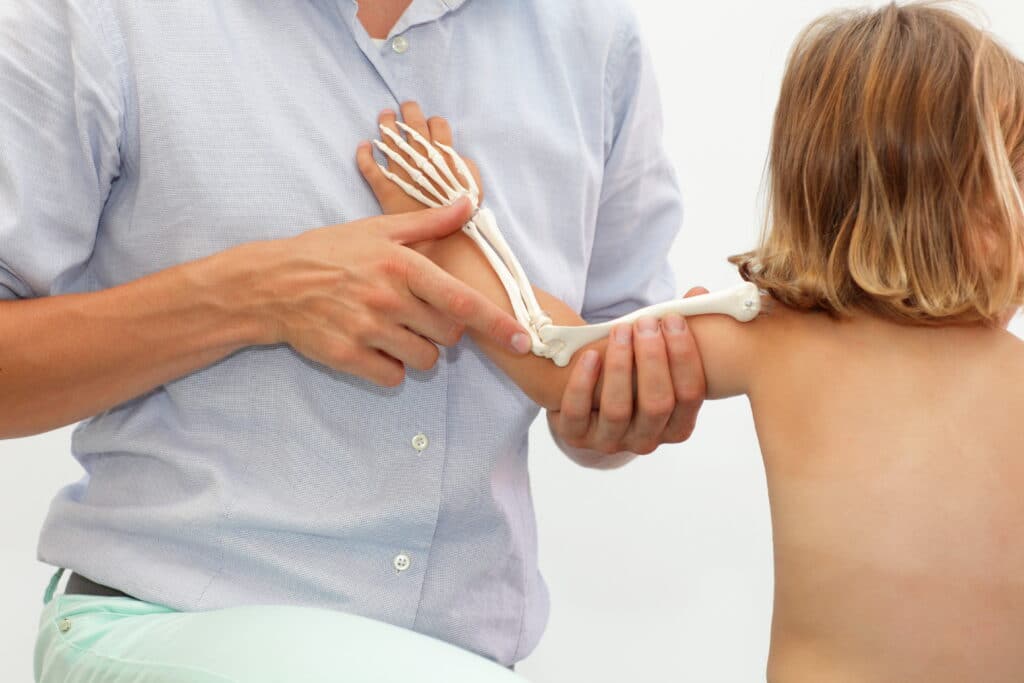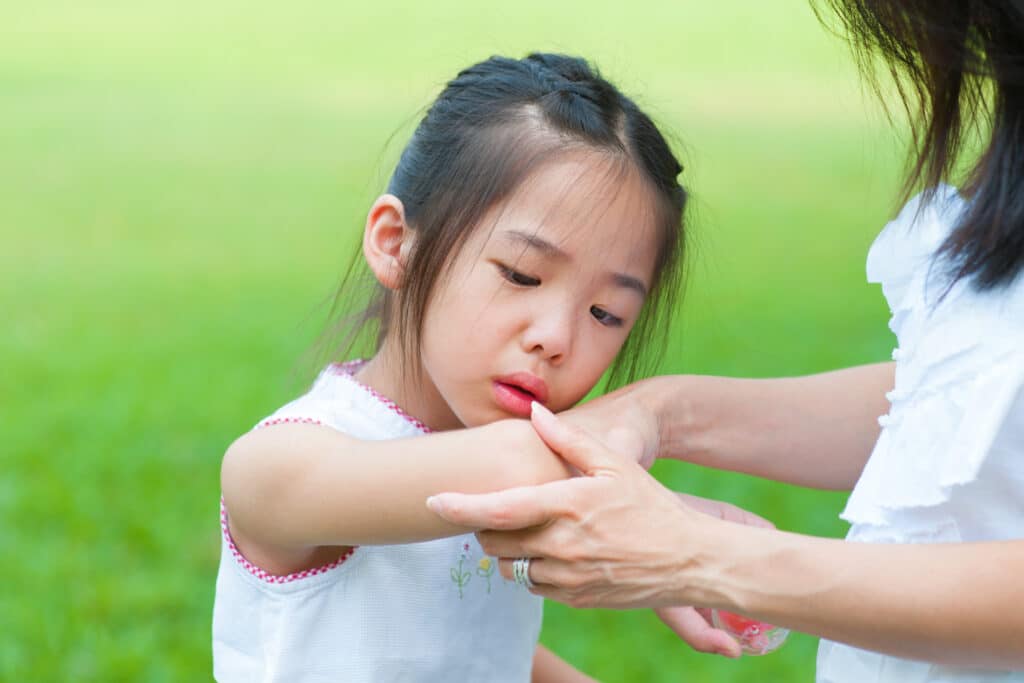Nursemaid Elbow: Causes, Symptoms, & Treatments
Picture this: You’re walking around the neighborhood hand-in-hand with your child. You cross the street and playfully pull them up over the curb by the hand. They cry out in pain. What possibly could have happened?
If you’re a parent or caregiver for a child, you’ve certainly done this, and likely without any idea it could cause an injury. Or you’ve swung your child around by the hands or arms playing in the yard. This totally normal behavior can cause an injury called nursemaid elbow.
Nursemaid’s Elbow

Nursemaid elbow, also known as nursemaid’s elbow, is a “pulled elbow” or a partial dislocation of the elbow joint. It is a common injury for children under 5. This is because young children’s joints and ligaments are still growing and relatively loose, making it easy to pull the radial bone out of place.
Referring to this arm injury as nursemaid elbow or nursemaid’s elbow comes from a time when nannies (nursemaids) commonly looked after children and were blamed for the injury. Adults can accidentally cause nursemaid elbow by swinging a child during play or tugging on their arm to get them moving. A baby’s arm can get nursemaid’s elbow by simply rolling over onto it.
Basic Elbow Anatomy
The elbow joint is where the two lower arm bones (the ulna and radius) meet the upper arm bone (the humerus). These bones are held in place by several ligaments. You also have tendons in the elbow joint that attach muscle to bone and cartilage that protects the ends of your bones.
While kids are still growing, particularly from ages 2 to 5, their ligaments are still immature and thus more likely to stretch, allowing the radial head of the elbow to move from its normal position.
Nursemaid’s Elbow Symptoms
Nursemaid’s elbow is a common elbow injury. Your child may initially cry out from the pain, but their elbow will likely not swell, and they may not complain much after the initial instance.
Common symptoms of nursemaid elbow include:

- Expressing immediate pain after someone pulls or swings them by the arms or hands
- Complaining of pain in their wrist or shoulder
- Willingness to move their shoulder but not wanting to move their elbow or arm
- Using one arm to support the weight of the other
- Holding their arm in a bent position close to their body
- Refusing to rotate their arm at the elbow or bend their elbow all the way
If you believe your child may have suffered radial head subluxation, even if they aren’t exhibiting obvious elbow pain, it’s best to seek health care right away. It’s unlikely the condition will correct itself, and even if it does so somewhat, it might not do so completely. Delaying treatment can make getting the stretched ligaments to snap back into place harder. Failure to treat the issue altogether could cause permanent disability.
Nursemaid elbow is diagnosed through a physical exam and asking questions about possible injuries. Your family medicine doctor or elbow specialist will check your child’s range of motion and look for areas of tenderness.

Imaging tests like X-rays won’t show this type of partial dislocation, but your specialist may take one to rule out other issues like a broken bone. If your child is in pain while you seek a diagnosis, applying a wrapped ice pack or using over-the-counter pain relievers can help. Do not attempt to straighten or move the injured arm or put it back in place yourself.
Nursemaid Elbow Reduction
Nursemaid elbow treatment is primarily achieved by your elbow specialist performing a physical procedure called a reduction. A reduction of nursemaid’s elbow usually involves flexing and rotating the arm to move the radial head of the elbow back into the correct position. You may hear a pop or click as it slips back into place, and your child may temporarily feel a bit of pain.
It sometimes takes a couple of attempts to reduce nursemaid’s elbow and get it back into the joint. Once your specialist gets the elbow back in place, they may ask your child to rest their arm for up to 15 minutes before moving it again. In some cases, your child may wear a cast for 1-2 weeks to let the elbow joint rest and settle into a better position.
Recurrence of nursemaid elbow is common, especially in the first month. The initial stretching of a child’s already loose ligaments makes it even harder for them to hold the elbow in place. As your child grows, however, their bones and ligaments will fit together more tightly.
Preventing and Reducing Nursemaid’s Elbow
To prevent nursemaid elbow, be careful not to pull or jerk your child by the arm or hand. This includes during play, and you’re advised not to swing them around by the arms or hands. Be patient and careful moving their limbs through car seat straps or into jackets.
If your child is complaining of elbow pain or you think they may have nursemaid elbow, please contact us to schedule an appointment.
Leave a Reply